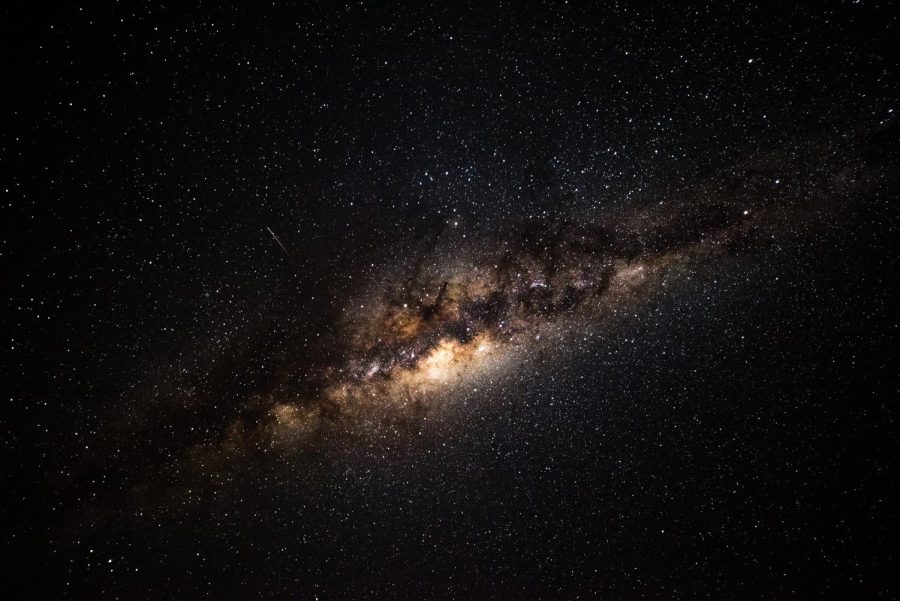Is There a Ninth Planet?
February 27, 2023
If any given person was asked how many planets there are in the solar system, chances are that they will answer the typical eight: Mercury, Venus, Earth, Mars, Jupiter, Saturn, Uranus, and Neptune. However, researchers at Caltech have found mathematical evidence of a possible ninth planet somewhere in the outer reaches of our solar system.
The search for a ninth member of our solar system stretches all the way back to 1906, when astronomers discovered irregularities in Uranus’s orbit. In particular, U.S. businessman and writer Percival Lowell concluded that there must be another planet out there whose gravitational pull was causing them. This theoretical planet was discovered in 1930, a heavenly object that we now call Pluto. Unfortunately for all the Pluto fans out there, Pluto was discovered to be a dwarf planet in 1930 whose gravitational pull is too weak to have much of an effect, at which point the quest for a ninth planet was forgotten.
“There’s a history behind looking at orbits that are not perfect ellipses…and predicting that there’s an object that’s attracting them,” said senior Xing Liu.
In 2014, however, the search for an additional planet was revived when astronomers observed that at least five objects in the Kuiper Belt, the asteroid belt between Mars and Jupiter, were following orbits that were unusually clustered together. These orbits were analyzed and discovered not to be caused by Neptune, which meant that a larger object must be causing the disturbances.
A few years after these observations were made, Caltech astronomers Konstantin Batygin and Mike Brown hypothesized that this mystery object must be a giant planet whose gravitational pull was affecting the orbits of these Kuiper Belt objects. The reason why Planet X’s existence is so ambiguous is that these astronomers didn’t directly discover it. Rather, they used data of existing orbital patterns, mathematical modeling, and computer simulations to infer the location and size of a planet.
“To date, the distinctive orbital alignment observed within the scattered disk population of the Kuiper Belt remains largely unexplained…a distant, planetary mass companion can explain the available data,” stated a paper published by Batygin and Brown in The Astronomical Journal.
If there is indeed a Planet X, then it is calculated to be about 10 times the mass of Earth (around the size of Neptune or Uranus) and four times the size. It would also be so far away from the Sun that it would take 10,000-20,000 years to complete an orbit. Neptune, by comparison, only takes about 165 years to complete a full orbit around the Sun.
Although Planet X has not yet been spotted, today’s advanced telescopes could be able to pick up an object of its size and distance. Telescopes on Hawaii’s Mauna Kea volcano are currently being used to search for the elusive ninth planet, but still have not found it. Despite this, space is a massive area to search, and evidence of it could still be within reach.
“This is not, however, the detection or discovery of a new planet. It’s too early to say with certainty there’s a so-called Planet X,” said NASA Planetary Science Director Jim Green on NASA’s website. “What we’re seeing is an early prediction based on modeling from limited observations. It’s the start of a process that could lead to an exciting result.”
While this is the most likely explanation behind the Kuiper Belt objects’ mystifying orbits, there are also other theories regarding this topic, including the idea that a black hole (possibly as small as a bowling ball) is responsible for the gravitational pull. Skeptics believe that the hypothesis is simply a result of biased data.
“To me, [the ninth planet] sounds like a very interesting prospect,” said Liu, adding that it “would be a great opportunity, if it were discovered, to explore, because it would possess [things] that are not present in our own solar system. However, I’m fairly skeptical of it existing because right now, I think only a few research groups are putting themselves behind the topic.”
Whether Planet X is out there or not, its hypothetical existence still has effects on the scientific community today as astronomers continue to research the strange orbits of the Kuiper Belt objects. As the ninth member of our solar system continues to remain elusive, it will provide a mystery for future generations of astronomers to solve.
Photo courtesy of UNSPLASH.COM

